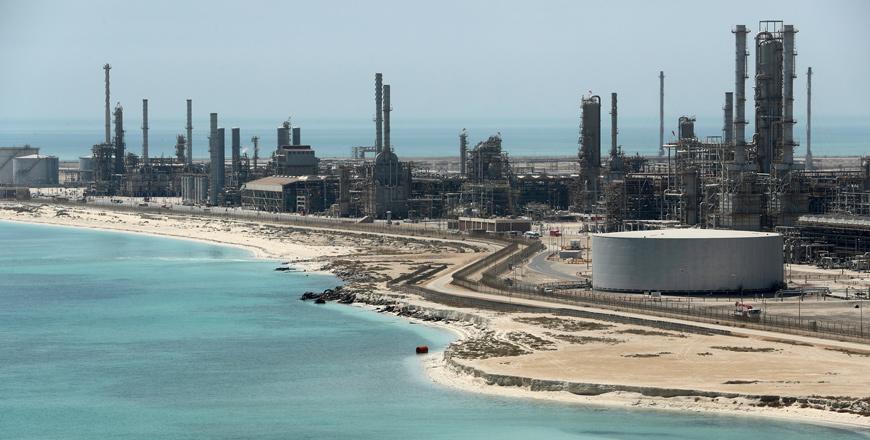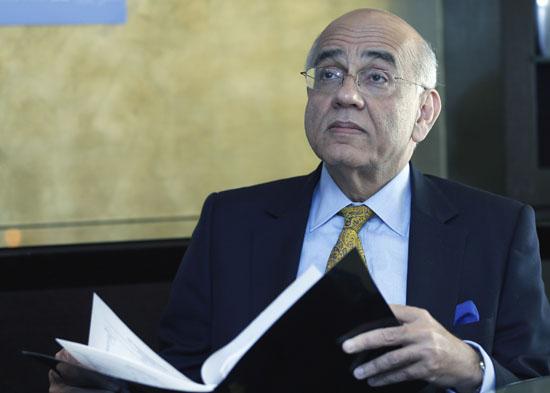You are here
Saudi Arabia looking beyond oil price slump as rig count spikes
By Reuters - Mar 21,2015 - Last updated at Mar 21,2015
DUBAI/KHOBAR, Saudi Arabia — As the global energy industry stares transfixed at a spectacular drop in US rigs, Saudi Arabia is ramping up the number of machines drilling for oil and gas despite a sharp fall in the price of crude.
Industry sources and analysts say the Organisation of Exporting Countries (OPEC) kingpin is looking beyond the halving of global oil prices since June 2014 to a time when crude could again be in short supply.
Riyadh is therefore keen to preserve what is known as its spare capacity, the kingdom's unique ability to raise oil output quickly at any given moment.
But to achieve that, Saudi Arabia has to drill much more than in the past, after boosting output to record levels to compensate for global supply outages in the past four years.
"The Saudis are probably worried about everyone else reducing capital expenditure as a result of low oil prices and about non-OPEC output falling off a cliff at some point. We all know that supply disruptions are unpredictable but they are certain," said Gary Ross, executive chairman of New York oil consultancy PIRA.
"The increase in Saudi rig numbers is like a signal to the industry — let's be rational. We will need supply growth in the future," he added.
State oil giant Saudi Aramco used a record-high 210 oil and gas rigs in 2014, up from around 150 in 2013, 140 in 2012 and some 100 in 2011, according to previous industry estimates.
Amin Nasser, Aramco's senior vice-president for upstream operations, said this month his firm had yet to decide whether to increase the rig number in 2015 from the 212 currently in use.
But data shows the numbers are still rising.
Excluding non-US-registered rigs such as Chinese or Russian, February 2015 saw a total Saudi rig count of 155, up from 150 in January and 146 in December, according to data from OPEC and US oil services company Baker Hughes. Since 2010, the number of US-registered rigs has doubled from 67.
Sadad Al Husseini, a former senior executive at Aramco and now an energy consultant, said the rise in the Saudi oil rig count had been evolving over a long period.
"You need to drill more wells if you are producing 10 million barrels per day and maintaining your spare capacity," he said.
"It is also a natural phenomenon in the oil business, that the more you produce, the more you deplete your reserves and the more rapidly your field capacity declines. You need to drill more wells more frequently, simply to maintain production capacity," Husseini added.
Focus on gas
Maintaining Saudi Arabia's spare-capacity cushion for oil is costly.
The country is effectively investing in something it cannot monetise immediately, but it sees the strategy as a pillar of its stature as the most important global oil player and a Group of 20 member.
In 2008, Oil Minister Ali Al Naimi said production capacity would rise to 15 million barrels per day (bpd) from 12.5 million but the plan was put on hold after the global financial meltdown of late 2008 saw oil plunge below $40 a barrel.
Subsequent events such as Libya's 2011 civil war tested the Saudi ability to ramp up output to help soothe global supply outages and showed that spare capacity could not be eroded if Riyadh wanted to continue playing a key role.
Saudi Arabia's refusal to cut output last year has played a part in the most recent oil price slump, as Riyadh fights to maintain its market share against competing sources of crude.
The OPEC heavyweight has been pumping more than 9 million bpd since mid-2011, up from 8.1-8.3 million for most of 2009-2010.
To ease pressure on its ageing giant fields, Ghawar and Abqaiq, Aramco launched the Khurais and Manifa fields with total capacity of more than 2 million bpd.
It plans to increase output from onshore fields, Shaybah and Khurais, by 550,000 bpd by 2017. It has also been ramping up drilling in offshore fields such as Safaniyah.
The projects should allow Aramco to preserve the world's largest spare-capacity cushion at more than 2 million bpd.
For 2015, industry sources estimated Aramco would deploy at least the same number of rigs as in 2014. Aramco declined to comment for this report.
Over the past two years, Saudi production has sometimes exceeded 10 million bpd in summer months as crude is burnt locally for power generation and new refineries.
That forced Aramco to put more emphasis on gas exploration, as higher gas output would help preserve spare oil capacity.
"Aramco's focus now is more on gas, so they have been moving some of their oil rigs to gas rather than terminating the contract and paying a penalty," an oil industry executive in Saudi Arabia said.
Related Articles
DUBAI — Saudi Arabia plans to cut its crude oil exports in April to below 7 million barrels per day (bpd), while keeping its output well bel
Gulf oil exporters must reduce spending, including subsidies and diversify their economies to cope with lower revenues caused by the sharp drop in crude prices, the International Monetary Fund (IMF) said.
DHAHRAN, Saudi Arabia — Saudi Arabia's state-owned oil giant is finalising options for its partial privatisation and will present them to it


















